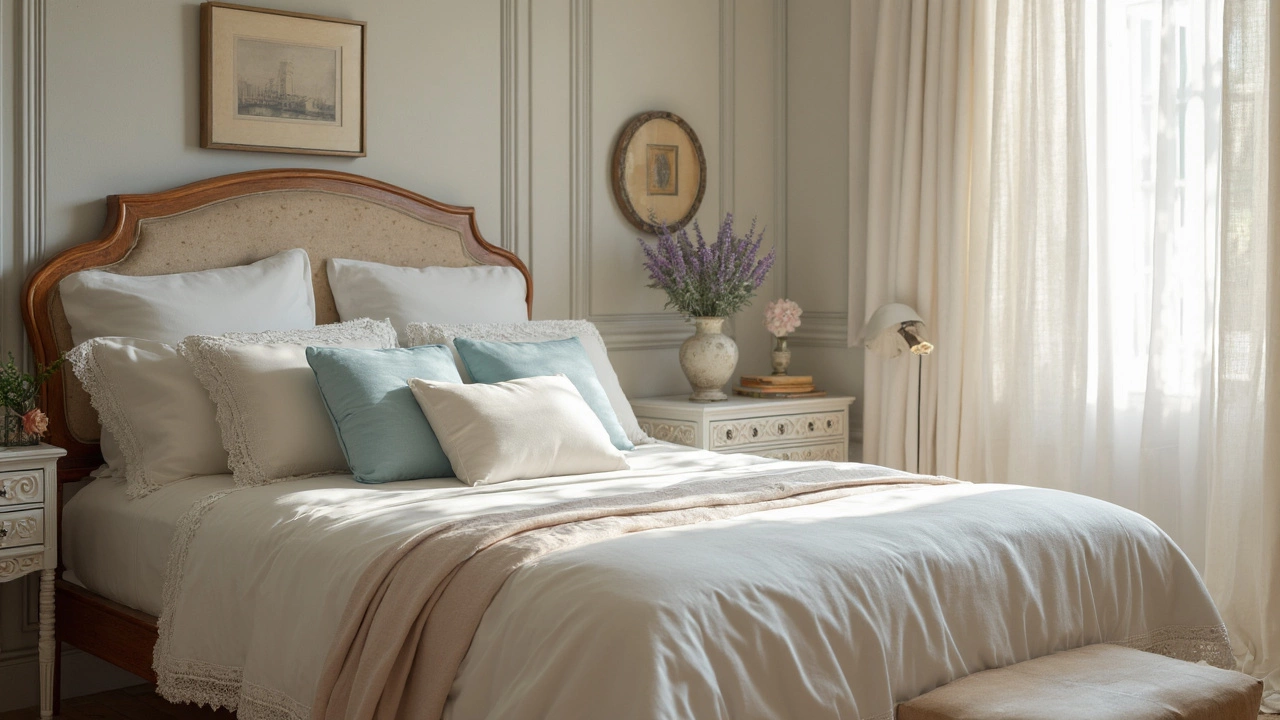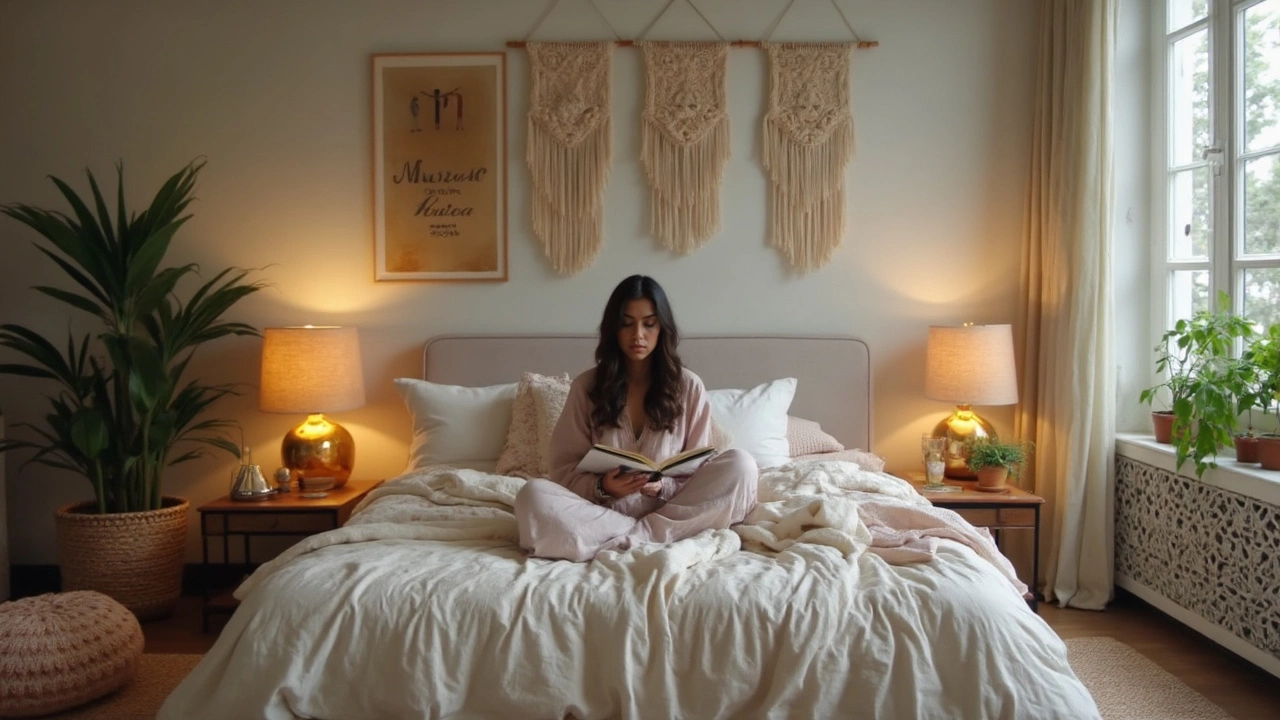French Bedding Style: What It Means and How to Recreate It at Home

You know how some beds just look... different? Like the kind that almost begs you to flop down and nap with zero guilt. It’s not just a trick of the light or Instagram filters. There’s a real reason hotel beds in Paris or small-town Provence feel miles away from what you grew up with—and it all comes down to French bedding. The whole “French bed” thing isn’t just some Pinterest-peddled fantasy. There really is a way the French do their beds and it’s both ridiculously simple and surprisingly thoughtful. So, what does French bedding actually mean? Let’s pull back those dreamy linen sheets and find out.
The Roots of French Bedding: Old-World Traditions and Modern Day Magic
French bedding isn’t about flash. Instead, it borrows from traditions that go back centuries, when French grandmothers used massive linen sheets handed down for generations. Linen is the real MVP here. Not the starchy, shiny new stuff, but linen that has lived a little—soft, rumpled, with that delicious tactile glide. Linen grows in northern France, especially in Normandy and Flanders, where the damp, cool climate is perfect for producing long, strong flax fibers. The French have been spinning these into bedding since at least the Middle Ages, and it’s not just a question of nostalgia. Linen is breathable in summer, cozy in winter, and, unlike cotton, actually gets softer the more you sleep on it. That’s why families would pass down linen sheets like they were family silver.
Beyond the fabric, there’s a certain attitude about beds in France. You won’t see a carefully hospital-cornered mattress here. The French have a way of making the bed look finished without making it look, well, finished. You’ll see sheets left rumpled, a coverlet tossed casually, pillows that look like they were fluffed by someone reaching for their morning coffee. And somehow, it all feels intentional. This is called the “effortless” French look, but don’t get fooled—there’s a bit of clever curation behind every casual drape and imperfect corner.
Historically, beds in France were not the queen-and-box-spring setups you might picture. For much of modern history, French beds ran a bit narrower and shorter. That’s why vintage French sheet sets can be surprisingly small. Even the color palette has roots in function: French linen was usually left undyed, ranging from ecru to soft oatmeal to faded dove gray, all because that’s what you got straight off the loom. Today, French bedding brands still lean into these calming, washed neutrals, with occasional stripes or floral-inspired embroidery borrowed from French country houses. And don’t forget the iconic French bolster pillow—the “traversin”—which runs across the whole bed instead of smaller, matching throws. It’s all about comfort and practicality with a pretty side effect.
Let’s not overlook how the French approach bedroom life itself. The bed isn’t just a place to sleep. It’s where you read, breakfast, argue, and—let’s be honest—sometimes work from home, all tangled up in the same sheets. French bedding is built to survive those lived-in moments and look good doing it. There’s something laidback-but-elevated in that combo that’s hard to fake—but not impossible to steal.

Anatomy of a French Bed: What Goes On and What Gets Left Out
Ready for a surprise? French beds do not usually start with a top sheet. That’s right—most French people skip the flat sheet and just use a fitted sheet, then layer directly with a duvet inside a washable cover. The logic? It’s easier to make, and you just peel off the duvet cover for a wash. This “no top sheet” method has roots in both French practicality and a little laziness—and it’s caught on globally in recent years.
Here’s what you’ll typically find in a French bedding setup:
- Fitted linen sheet: Not too tight, always linen. We’re talking grown-in-France, stonewashed so there’s zero scratchiness. This is the base layer that touches your skin.
- Duvet with cover: The heart of French bedding. Most French homes have at least two duvet covers so there’s always a clean one handy. In summer, the duvet gets swapped for a lighter blanket or a simple matelassé coverlet (a kind of quilted, woven blanket that looks fancy but feels humble).
- Bolster pillow (traversin): This long, cylindrical pillow runs head-to-head, supporting other pillows and perfect for propping you up to read, check your phone, or snack in bed. Sometimes it’s the only pillow, sometimes it’s layered with more standard pillows.
- Pillowcases (usually linen or cotton percale): French pillowcases often have envelope closures instead of open ends or zippers. And you’ll rarely see piles of decorative pillows. It’s about looking inviting, not staged for a catalog.
- Throw blanket (optional): Tossed over the foot of the bed, it’s totally up to you if you want an extra layer for sleepy afternoons or cold nights.
Sounds simple on paper, but there’s a twist: French beds almost always look just a tad unkempt, on purpose. Instead of tucking everything in tightly, the sheets and duvet are spread freely, with natural folds. It’s the antithesis of a military-made bed—think more of a bed you can’t wait to sink into, not one you feel guilty about messing up. The French call this “défait mais parfait”—undone, but perfect. That effortlessness is key and makes it feel lived-in, cozy, and endlessly inviting.
Cleaning and upkeep matters too. Since French beds rely on just one or two key layers, each piece is designed to take a regular beating in the wash. Linen, in particular, is famously tough—it’ll get more lusciously soft after every wash, unlike cotton, which gets thinner and worn. And since the linen is usually undyed or stonewashed in gentle tones, you don’t have to obsess about color fading. Pro tip: if you ever get your hands on French linen sheets, resist the urge to iron. The makeup of the fabric means those artful crinkles actually make the bed look better.
Commercial French bedding brands like Yves Delorme, Alexandre Turpault, and Bonsoirs have leaned hard into reviving this classic-for-a-reason approach. Instead of selling you three sets of overly matched sheets and ruffles, they offer single fitted sheets, plain or subtly embroidered pillowcases, and seriously high-quality linen or cotton options. These brands also make it a point to keep their fabrics free from harsh chemicals, and stick close to the family-owned textile workshops that have dotted the French countryside for centuries. Some, like Charvet Éditions, have looms in operation that have been spinning linen since the late 1860s—and they still turn out some of the softest, strongest bedding in Europe.

Tips to Get the French Bedding Look (Without a Passport or a Fortune)
If you want to bring this French bedroom style home, the good news is you don’t need to live in a manor outside Paris, or blow your budget on imported sheets. Here’s where to start:
- Chill out about matching. French beds rarely use sheets and pillowcases from the exact same set. Don’t sweat perfect matches—instead, layer sheets, a duvet cover, and pillowcases from colors that feel peaceful together, like muted blues, pale pinks, oyster whites, or sandy beige.
- Go linen, or at least fake it. Real flax linen from France is pricier than regular cotton, but the texture and lived-in look are hard to beat. Look for stonewashed linen, which means it’s been softened up right out of the package. If linen feels out of budget, try cotton percale, which is crispy and light with a similar airy feel. A good cheat: IKEA’s VÅRKRAGE line mimics the look at a tiny fraction of the price.
- Embrace imperfection. This is not the place for hospital corners. Gently toss the duvet on, let the edge fall, and leave the pillows haphazard. Not only does this instantly give you “French girl” bedroom vibes, but it also saves you precious time every morning. Double win.
- Pull in textures and layers. The *most important seo keyword* here is French bedding, and it’s not just about fabric. Try a quilted coverlet or unstructured throw, even an old-fashioned paisley “courtepointe” if you can find one. The point is, layering makes it look both cozy and chic.
- Keep accessories minimal but personal. No giant tower of decorative pillows, but don’t be afraid to drape a favorite scarf or a vintage blanket over the end of the bed. Maybe a little tray for tea and croissants (hey, you never know!).
- Get the lighting right. If you’re chasing “French bedroom” energy, it’s not just about the bed itself. Set up a soft, warm bedside lamp, hang simple curtains to let in that gentle morning sun, and keep clutter to a minimum. A small vase of wildflowers on the nightstand brings in that countryside feel without trying too hard.
- Easy on the patterns, but don’t go sterile. French beds are rarely all-white. Pale stripes, faded florals, or subtle checks keep things interesting without overwhelming your eyes the second you wake up.
- Wash—and wear—in the comfort. Don’t overthink the first signs of wear on those sheets or covers. The longer they last, the better they look and feel. There’s an actual French saying connected to this: “Le linge de maison s’adoucit avec le temps” (household linens soften with time). Let them age with you.
- If you want to get super authentic, hunt down a traversin pillow. You’ll find them in French bedding stores or online under “French bolster” (dimension: about 35 inches long), and they’re surprisingly comfy for propping up in bed with a book, iPad, or lazy Sunday breakfast.
One more thing: French bedding is less a product, more a mindset. Think about how you want your bedroom to feel—a retreat, a place for slow mornings, a private nook away from the world’s chaos. If your bed makes you sigh with contentment before your first cup of coffee, you’ve nailed it. And don’t let anyone tell you what counts as “effortless”—if you want a hot pink throw or a wild floral sheet, that’s the whole point of French style. It’s personal, practical, and it’s meant to work for real life, not just magazine spreads.
So, when someone asks you what French bedding means, you’ve got the details. It’s a mix of heritage, habit, and a little attitude. It’s linen rumpled for comfort, pillows chosen for practicality, and an approach where ease trumps perfection every time. And the real beauty? You can have all of it right from your own room, no passport stamp required.